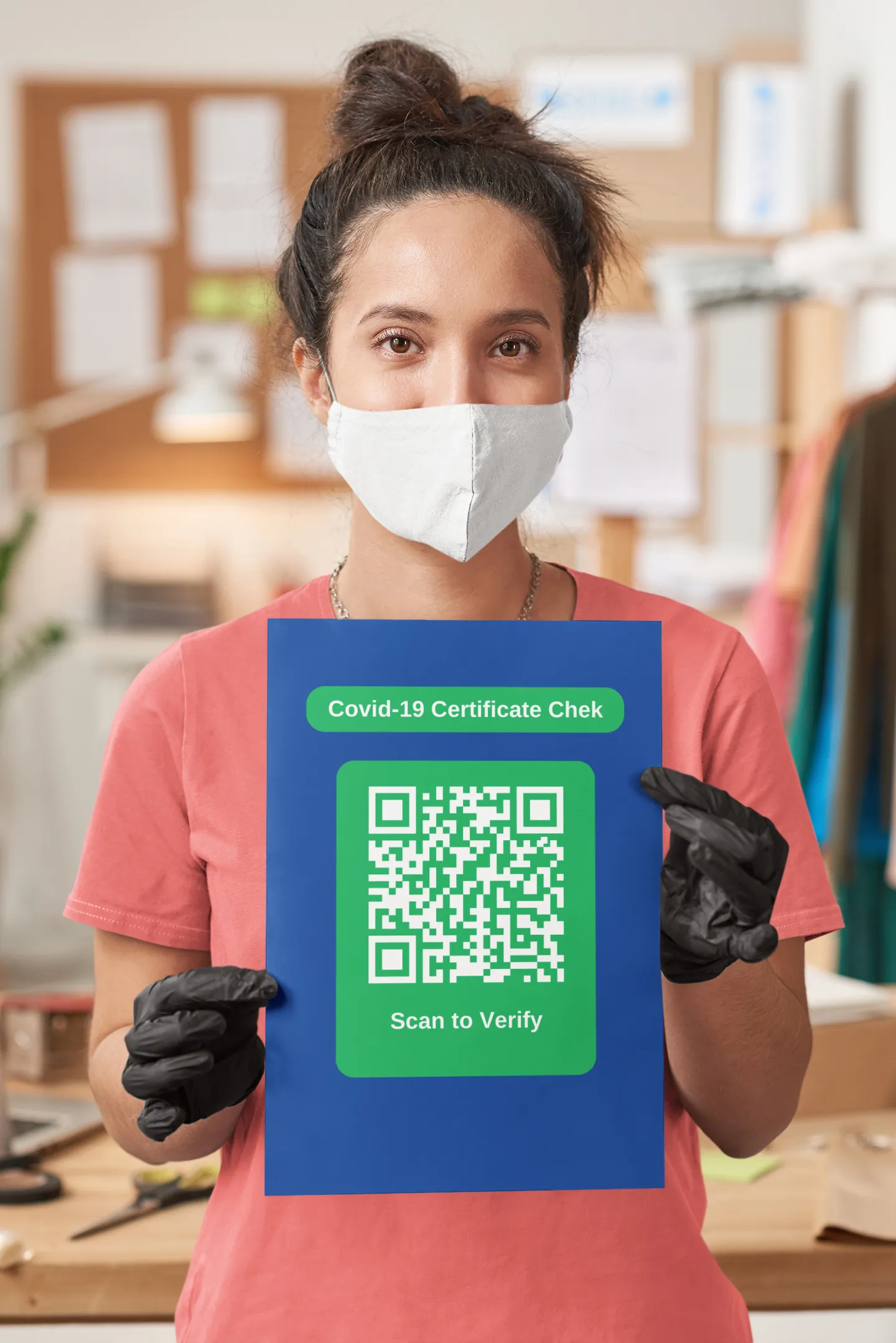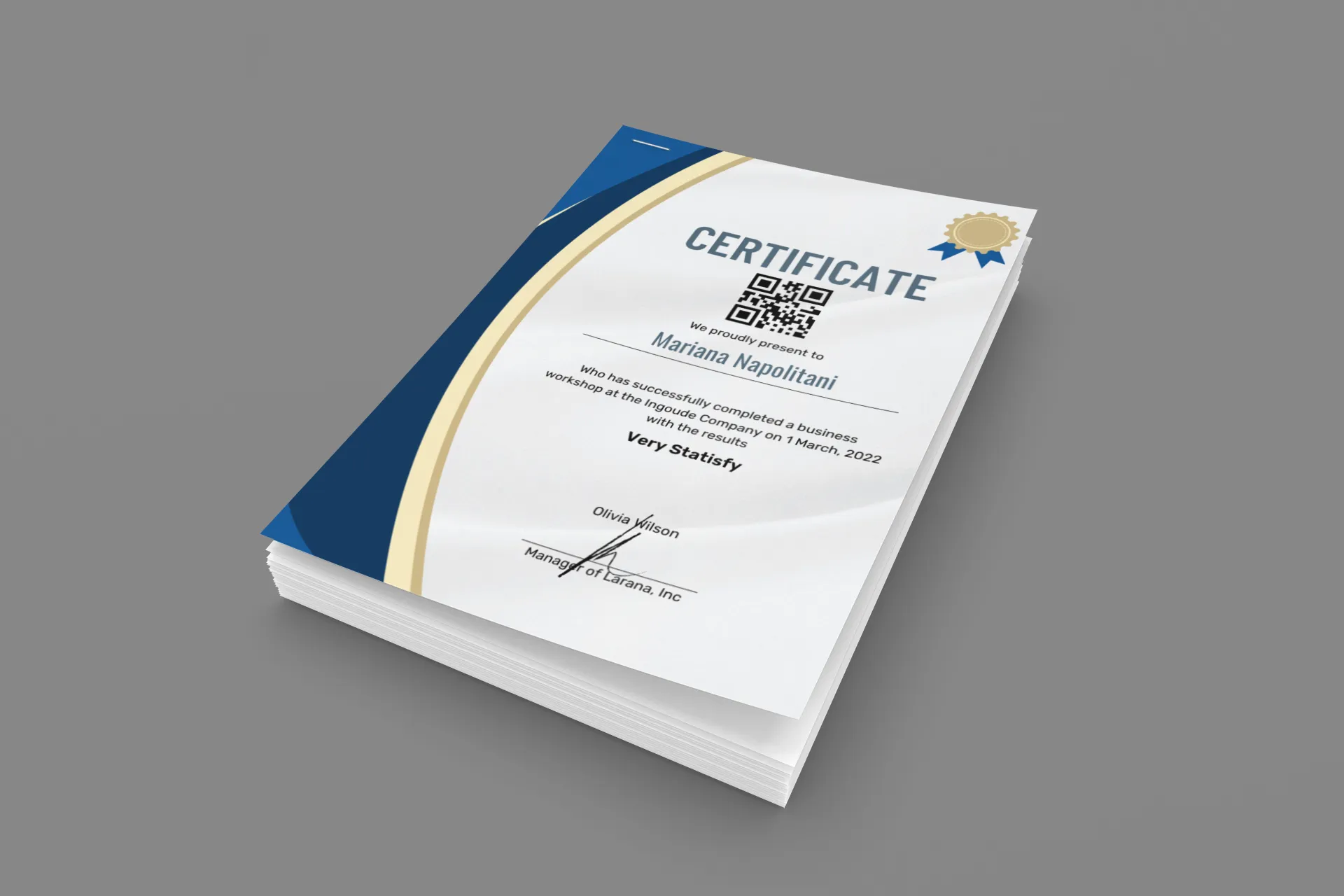

Table of Contents
1.
Introduction
2.
Advantages of Using QR Codes for Document Verification
3.
Implementing QR Code Verification
4.
How to create your own Verification Of Documents QR codes?
5.
Conclusion
Verification Of Documents With QR Codes
In our digital age, the need for efficient, secure, and reliable methods of document verification is more critical than ever. One innovative solution that has gained prominence in recent years is the use of QR codes. This article explores the advantages of using QR codes for document verification, how to implement them, and what the future holds for this technology.
Introduction to QR Codes
What are QR Codes?QR codes, short for Quick Response codes, are two-dimensional barcodes that can store a wide range of data, from URLs and text to contact information and more. They were first developed in Japan in the 1990s and have since found applications in various fields.
How are QR Codes Used in Document Verification?In the context of document verification, QR codes are used to store essential information related to a document, such as its authenticity, date of issuance, and issuer. These codes can be easily scanned using a smartphone or dedicated QR code reader, providing quick and convenient access to document details.
Advantages of Using QR Codes for Document Verification
Enhanced Security and Fraud PreventionQR codes add an extra layer of security to documents. By including encrypted information within the code, it becomes challenging for counterfeiters to tamper with or forge documents. Authenticity can be verified quickly and accurately.
Quick and Convenient Access to InformationOne of the primary advantages of QR codes is the ease of access they offer. Users can scan the code with a smartphone or a device with a camera, instantly accessing the document's details without the need for manual data entry. This not only saves time but also reduces the risk of human error.
Reduced Manual ErrorsTraditional methods of document verification often involve manual data entry, which can be prone to errors. QR codes eliminate this need by providing a reliable, machine-readable format. This reduces the likelihood of mistakes in the verification process.
Implementing QR Code Verification
When implementing QR code verification for document security, it's crucial to adhere to best practices to ensure its effectiveness. Here are some key considerations:
Secure Generation and Distribution of QR Codes- Restricted Access: Limit access to the tools or software used for generating QR codes. Only authorized personnel should have the ability to create and modify these codes.
- Data Encryption: Ensure that the information embedded in the QR code is encrypted. Encryption enhances the security of the data and makes it difficult for malicious actors to alter the content.
- Unique Identifiers: Assign unique identifiers to each document to prevent duplication or fraud. This can include document-specific serial numbers or digital signatures.
Regular Updates- Document Status: The information contained within the QR code should reflect the document's current status. Regularly update the code to ensure accuracy.
- Expiry Dates: If applicable, consider including an expiry date in the QR code. This is particularly useful for documents that have a limited shelf life, such as event tickets.
- Revocation: In cases where a document needs to be revoked or invalidated, ensure that the QR code reflects this change promptly. Revoked codes should be recognized as such during verification.
By following these best practices, organizations can enhance the security and reliability of their QR code verification system, ensuring that documents remain tamper-proof and up-to-date.
Real-World Applications and Success Stories
QR code verification has gained widespread adoption in various sectors, showcasing its versatility and effectiveness. Here are some real-world applications and success stories:
Government-Issued IDsSeveral governments around the world have integrated QR codes into their official identification documents, such as passports and driver's licenses. These QR codes contain personal data, biometric information, and additional security features. This has improved the efficiency of identity verification processes at border crossings and during routine identification checks.
Academic CertificatesEducational institutions are using QR codes to secure academic certificates. Students can easily verify their qualifications by scanning the code, streamlining the job application process. This practice also prevents the forging of certificates and degrees.
Event TicketsQR codes have revolutionized the ticketing industry. Event organizers provide attendees with QR code-based tickets, which can be quickly scanned at the entrance for a seamless check-in process. These codes can also serve as a means to control access to restricted areas during the event.
Product LabelsIn the retail and consumer goods sector, QR codes are being used for product authentication and traceability. By scanning the code on a product label, consumers can verify its authenticity, check for recalls, and access additional product information. This builds trust between consumers and manufacturers, especially in cases involving counterfeit goods.
Health PassportsThe COVID-19 pandemic accelerated the adoption of health passports containing QR codes. These passports enable individuals to provide proof of vaccination or negative test results when required for travel or entry into certain venues. QR code-based health passports have played a crucial role in managing the pandemic.
These real-world applications of QR code verification demonstrate its versatility, security, and convenience. They showcase the growing confidence in this technology for ensuring document authenticity and improving operational efficiency in various industries. As technology continues to evolve, we can expect even more innovative uses of QR codes in document verification.
L2QR
The QR code platform offers effective e-marketing solutions
Create your QR code design that will meet your brand standards with colors

How to create your own Verification Of Documents QR codes?
Embarking on the journey of crafting your own art QR code is an exciting endeavor that doesn't require advanced design skills or a hefty budget. With a few simple steps, you can infuse your creative vision into a QR code that aligns perfectly with your brand. Here's how:1. Sign up on Link-to-QR.com
Go to link-to-qr.com. Our platform offers an intuitive and user-friendly interface for generating QR codes with a personalized touch for free.
2.Upload Your Document or DataOnce you've chosen a QR code generator, upload the document or data that you want to encode into the QR code. For document verification, this may include essential information about the document's authenticity and issuer.
3.Generate the QR CodeUse the QR code generator to create your customized QR code. Ensure that it encodes the document information accurately and securely.
4.Customize the QR CodeOur QR code generator offers customization options. You can modify the QR code's appearance by changing its color, adding a logo, or incorporating design elements. However, maintain the code's scannability and clarity during customization.
5.Generate and Download the QR CodeAfter customizing the QR code to your liking, hit the "Generate" or "Create QR Code" button. The platform will generate your QR code, typically allowing you to download it in a common image format such as PNG or SVG.

6.Test the QR Code
Before deploying the QR code for official document verification, test it to confirm that it correctly links to your document or verification information. Utilize a QR code scanning app or your smartphone's camera to scan the code and verify that it opens the document or information as intended.
7.Distribute or Share the QR CodeOnce you're satisfied with the QR code's functionality, you can distribute it as needed. For document verification, you might print it on official documents, certificates, or labels. Alternatively, you can share the QR code digitally via email, your website, or any other secure digital channels.
By following these steps, you can create your own QR codes tailored to document verification, enhancing the security and efficiency of your verification processes.Conclusion
In conclusion, the use of QR codes for document verification is a promising solution that combines security, convenience, and efficiency. The advantages they offer, from enhanced security to reduced manual errors, make them a valuable tool in the digital age. As technology continues to advance, QR codes are poised to play a crucial role in the evolving landscape of document verification. So, the next time you encounter a QR code on an official document, rest assured that it represents a step towards a more secure and reliable future.